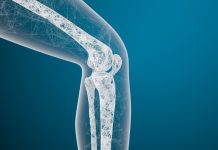Researchers at University College London (UCL) have developed a miniature scanner that could transform the way doctors diagnose and manage diseases such as cancer, diabetes, and arthritis
This device uses laser light and ultrasound waves to create detailed, real-time 3D images of the body’s internal tissues, providing a safer alternative to traditional imaging techniques like X-rays and MRI scans, Sky news reported.
Photoacoustic Tomography
The technology, called Photoacoustic Tomography (PAT), allows for the non-invasive scanning of blood vessels and tissues. Unlike older versions of the technology, which require several minutes to capture an image, the new scanner can do so in just one second or less. This advancement not only speeds up the process but also ensures clearer images by eliminating motion blur, making it easier to observe biological processes like blood flow in real-time.
The device’s ability to visualise blood vessels with exceptional detail makes it a valuable tool for diagnosing and monitoring a range of diseases. In trials with patients with early-stage diabetes, the scanner revealed important information about blood flow issues in the feet, a common complication of the disease.
The detailed images captured by the scanner showed how blood vessels in affected areas became deformed, providing insights into how the condition progresses and offering potential guidance for future treatment.
In addition to diabetes, the scanner has potential applications in oncology and arthritis. In cancer diagnostics, the device could help identify abnormal blood flow patterns around tumours, assisting in early detection and treatment.
For arthritis, the scanner’s ability to observe blood vessels and tissues in joints could help track inflammation and disease progression, helping clinicians monitor patients more effectively.
Highly detailed images
The PAT scanner is handheld, portable, and safe for repeated use. Its portability makes it ideal for routine use in clinics, potentially bringing advanced imaging technology to a wider range of healthcare settings. The scanner’s ability to produce highly detailed images quickly could significantly improve diagnostic accuracy and enable more timely interventions, improving patient outcomes.
The team at UCL continues to refine the technology, aiming to increase its imaging depth and resolution, and potentially incorporate artificial intelligence for automatic analysis. This breakthrough is seen as a major step forward in medical imaging, offering a more efficient, safer, and accessible way to diagnose and monitor a wide range of diseases.








